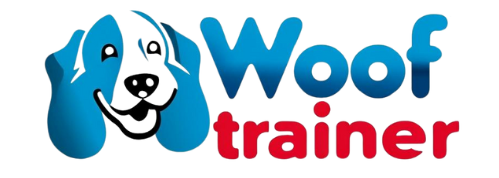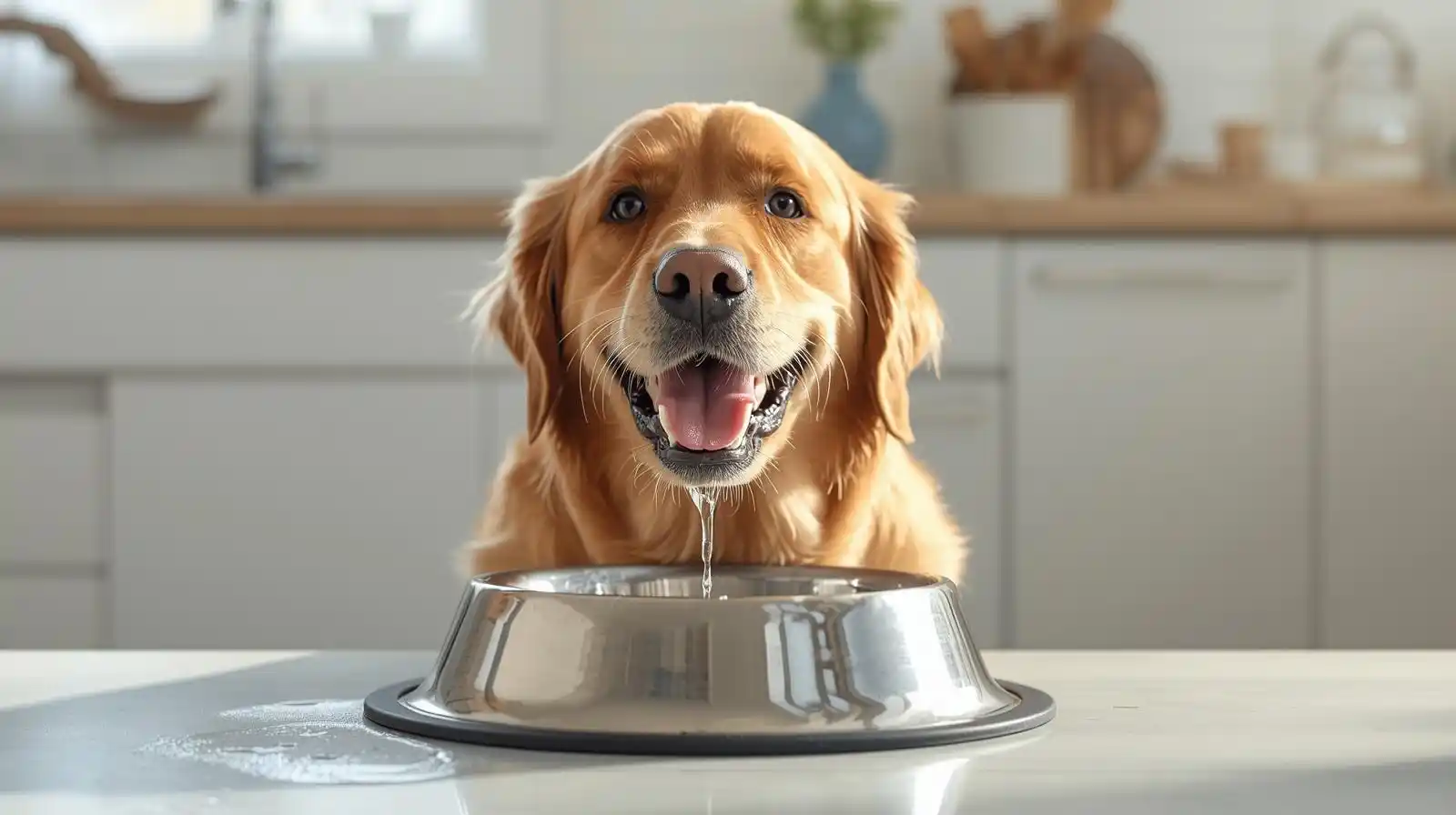When choosing a feeding or water bowl for a dog, material safety is a top concern for those who care deeply about their pet’s health. Among materials like plastic, ceramic, silicone, and metal, stainless steel often comes up. But are stainless steel dog bowls safe? This article examines stainless steel under the lens of material safety: its chemistry, risks, hygiene, and how to choose one that truly supports pet health.
What Makes a Material “Safe” for Dog Bowls
Health-conscious dog owners tend to look at:
- Non-toxicity: Does the material leach chemicals (e.g. BPA, lead, heavy metals)?
- Hygiene / bacterial growth: Are there crevices, scratches, porosity where microbes can hide?
- Durability and resistance to damage: Chips, cracks, corrosion degrade safety over time.
- Ease of cleaning: Dishwasher safe? Can it withstand boiling or hot water?
Evaluating Stainless Steel
Stainless steel is generally considered among the safest choices. But “stainless steel” is a broad term, and not all products are made equally. Below are dimensions to evaluate.
1. Composition & Non-Toxicity
- Food-grade stainless steel (often labeled 18/8, 18/10, or “304 stainless”) is safe — it resists corrosion and does not leach harmful metals under normal use.
- Poor quality stainless steel, or steel with inferior finishes, may contain impurities, coatings, or residues from manufacturing that could pose risk. For example, if a bowl has a non-food-grade coating, or if plating is used, it might degrade.
2. Bacterial Contamination & Hygiene
Studies show:
- Stainless steel bowls tend to harbor fewer total aerobic bacteria than plastic or ceramic when cleaned properly.
- In one Italian survey, metal (stainless steel) dog bowls showed higher total mesophilic aerobic bacteria counts (TMABc) than plastic bowls, but this was strongly associated with cleaning frequency and method. Bowls washed in dishwasher showed less contamination.
- Plastic gets scratched easily; scratches increase surface area and harbor bacteria. Stainless steel is harder, non-porous, and smoother, making cleaning more effective.
3. Durability, Wear & Physical Risks
- Stainless steel is resistant to chipping, cracking, and warping compared to ceramic or plastic. This means fewer physical defects over time that could trap bacteria or degrade the material.
- However, heavy use, or exposure to harsh chemicals (e.g. bleach) or very high heat might damage any finish or welds, especially on inferior steel. This can lead to rust or corrosion.
4. Allergies and Sensitivities
- Dogs may be sensitive to chemicals leached from plastics or low grade glazes in ceramics. Stainless steel, when truly food-grade, is generally inert and unlikely to provoke allergic reactions.
- One caveat: Some dogs can react to nickel or other metals in alloys, though this is rare, and typically only with prolonged contact or poor quality materials.
5. Cleaning and Maintenance Practices
Even with stainless steel, safety depends heavily on care:
- Wash after each meal (especially if it’s wet food). (PMC)
- Use hot water and soap; occasionally use dishwasher if the bowl is dishwasher-safe.
- Inspect for dents, rust, or pitting. Replace when damage is severe enough to trap residue or rust.
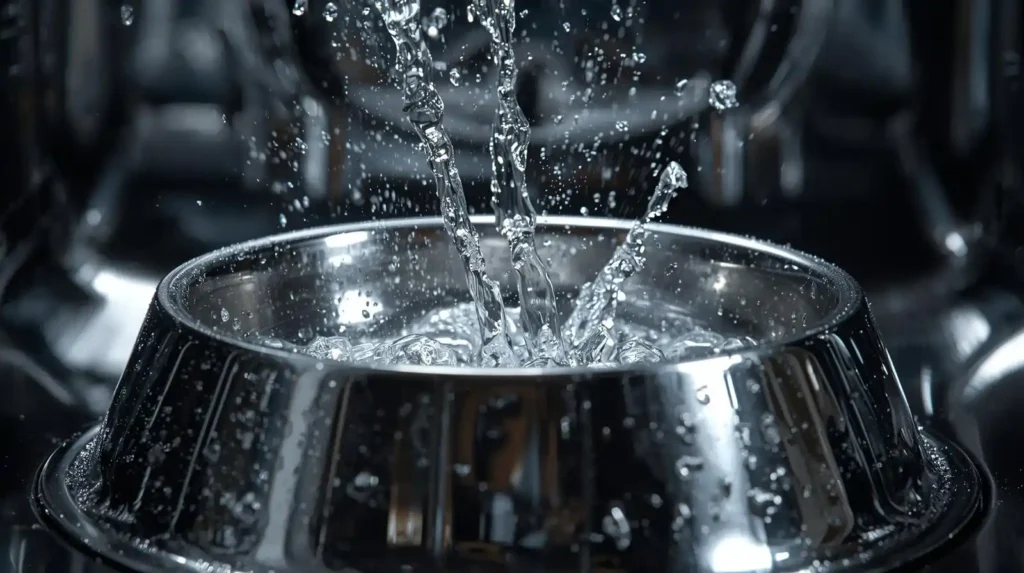
Comparing Stainless Steel vs Other Materials
To appreciate stainless steel’s safety, it helps to contrast with alternatives:
- Plastic: Cheaper, lightweight, but scratches easily. Often associated with chemical leaching (BPA, phthalates), absorption of odors, and bacterial traps. (Hemopet)
- Ceramic / glazed pottery: Aesthetic, heavy (so less tipping), but prone to chipping or micro-cracks. Poor glazes may contain lead or other toxic metals if not regulated.
- Glass: Inert and easy to clean, but fragile and can break.
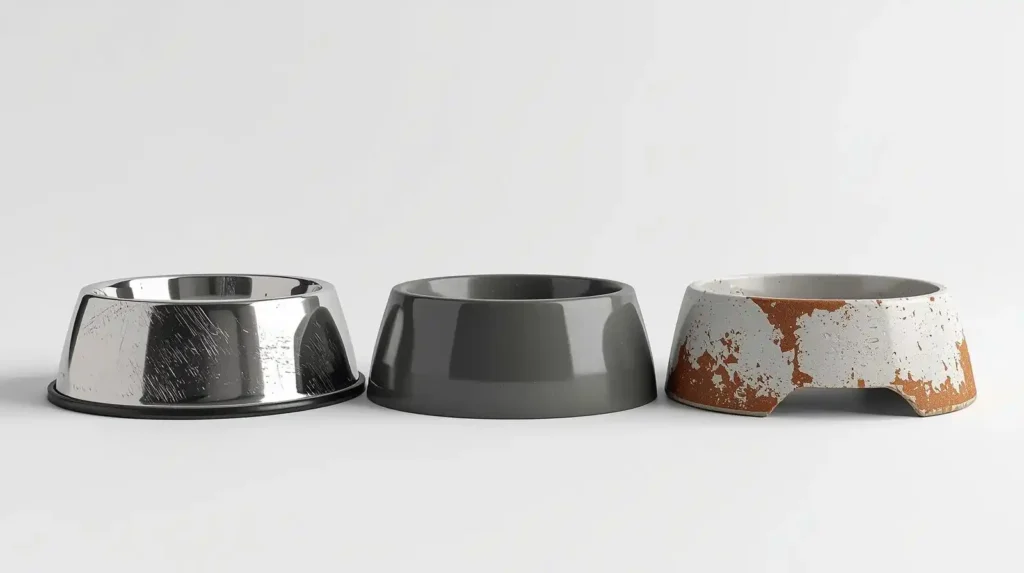
Practical Tips for Choosing a Safe Stainless Steel Bowl
To ensure a stainless steel bowl is as safe as possible, consider the following:
- Choose food-grade stainless steel: Look for labels like 18/8, 18/10, 304, or “food-grade stainless steel.”
- Non-coated / non-plated surfaces: Avoid decorative coatings that can wear off or expose underlying metal.
- Heavy-gauge steel: Thicker steel resists denting or warping; thinner steel may deform and collect moisture or rust.
- Non-slip bottom / rolled edges: To avoid sharp edges, and to prevent movement which can cause spills or licking against floor contaminants.
- Size & depth appropriate to breed and feeding style: A shallow bowl might suit a flat-muzzled breed; deeper bowls for bigger dogs.
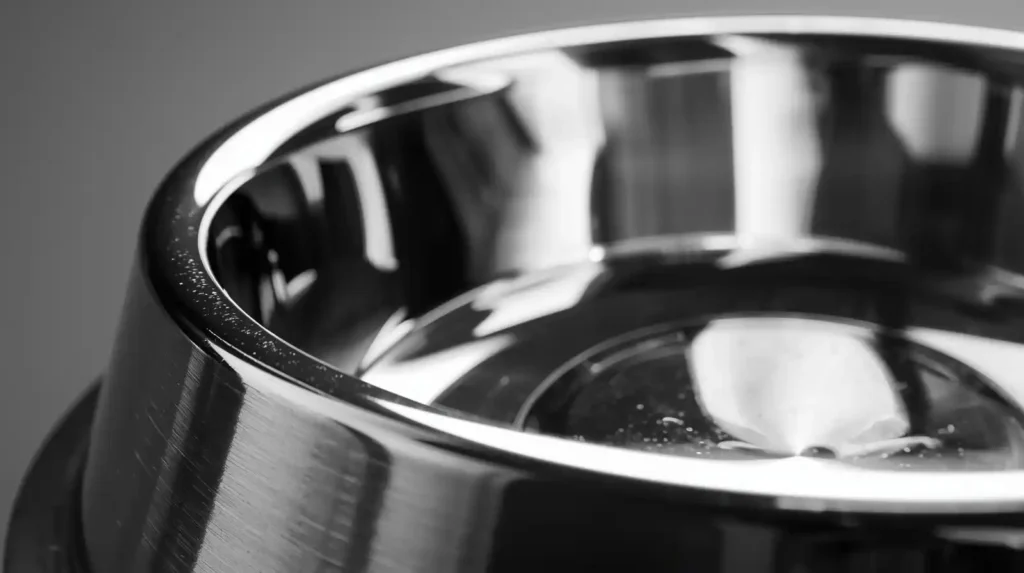
For more detail on pros and cons, check out The Pros and Cons of Stainless Steel Dog Bowls, and for guidance on specifications and safety checks see What to Look for When Buying a Stainless Steel Dog Bowl.
For those wanting a comprehensive resource, The Ultimate Guide to Stainless Steel Dog Bowls dives deep into grades, usage, cleaning and brands.
Risks & Situations to Watch
Even stainless steel has some caveats. Knowing these helps avoid problems:
- If you feed raw meats, or wet food that sits in the bowl too long, bacterial growth is more likely—even in stainless steel. Cleaning quickly is necessary.
- Manufacturing flaws: Some bowls may be stamped poorly, have seams or welds that collect food, or finishes that are not smooth.
- Low-quality steel may rust, especially if exposed to salty water or improperly dried. Rusted steel can flake and pose ingestion risk.
- If your dog chews the bowl or bangs it, noise and damage may occur; a lightweight steel bowl may slide, causing splatters or stress to the dog.
Summary: Are Stainless Steel Dog Bowls Safe?
In sum, with correct selection and proper care, yes—stainless steel dog bowls are very safe for pets. They offer non-toxicity, hygiene, durability, and minimal risk compared to plastic or low-quality ceramic. For health-conscious owners, investing in good quality, food-grade stainless steel bowls, washing them well and replacing when damaged, is a strong strategy to reduce risk of contamination, allergen exposure, and potential chemical leaching.
FAQ
-
Is any stainless steel bowl automatically safe?
Not always. Safety depends on whether it’s truly food-grade stainless steel, properly finished without coatings that degrade, and free from rust or contamination. Cheap, poorly made steel bowls may pose risks. -
Do stainless steel bowls kill bacteria?
They don’t “kill” bacteria on their own, but because they are non-porous, less likely to get scratched, and easier to clean (including via dishwasher), bacterial load tends to be lower. Silver in stainless steel may have mild antimicrobial properties, but this is not a substitute for good hygiene. (HowStuffWorks) -
Can stainless steel bowls cause allergies?
Rarely. Some dogs with extreme metal sensitivities might react, particularly to nickel in some alloys. But incidents are very uncommon compared to reactions from plastics or poor ceramic glazes. -
How often should I replace a stainless steel bowl?
Replace when you see damage: deep scratches, rust spots, warping, or seams where bacteria accumulate. Otherwise, with good care, a high-quality stainless steel bowl may last many years. -
How should I clean a stainless steel bowl to ensure safety?
Wash after each use, especially with wet or raw food, using hot water and soap. Occasionally sanitize via dishwasher if the bowl is safe for that. Fully dry to avoid rust. Keep backups so one bowl is always clean.
